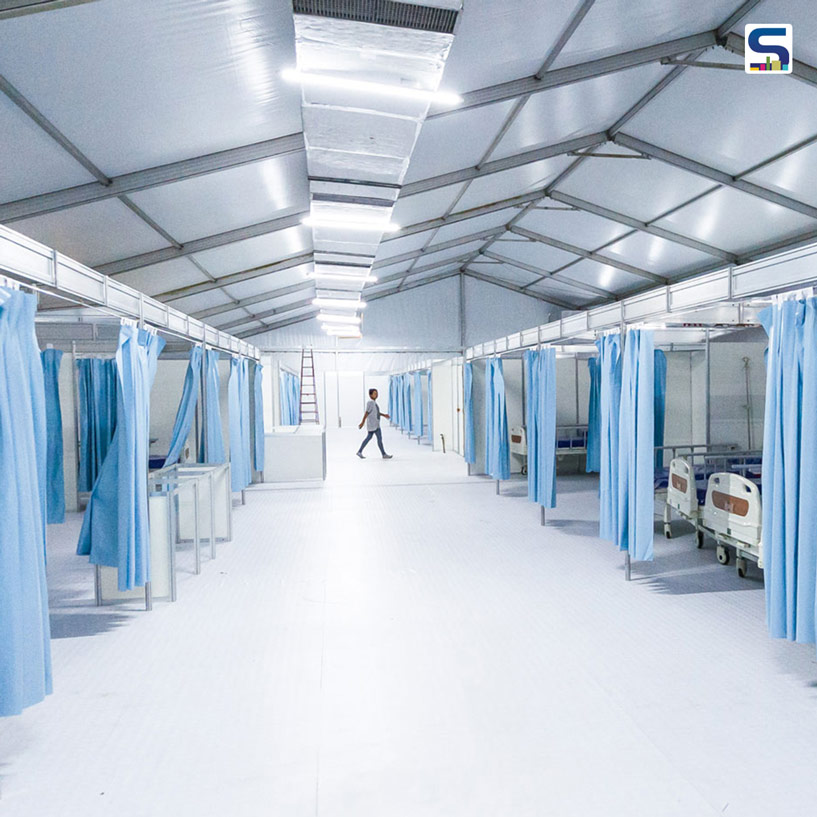
Following a research partnership with Milan's Politecnico di Milano, the World Health Organization recently released recommendations for the construction of new hospitals in the European Region. This report was produced by the Design & Health Lab of the Department of Architecture, Construction Engineering, and the Built Environment in Baku (Azerbaijan) under the leadership of Professor Stefano Capolongo. Read SURFACES REPORTER (SR)’s full report below:
The pandemic has highlighted the need for systems to respond to crises, and given us insight into the necessary architecture for health that can adapt to social, economic or environmental changes.
Safe, Comfortable and Sustainable Design
For hospitals to operate at full capacity regardless of unforeseen circumstances or casualties, it's essential that their design is both safe and comfortable, as well as sturdy and flexible enough to withstand restrictions and disasters. COVID-19 has brought attention to the environment in healthcare settings with regard to virus transmission, thereby underlining the necessity of strict hygiene measures.
The guidelines are intended for health institutions, organizations and their governing bodies - from general managers to architects and technicians. They provide recommendations for addressing future challenges in terms of hospital location and how this affects different functions, whether it is based in a city centre or in an outer area that can potentially serve a wider area. Additionally, the emphasis is placed on the significance of green areas for the improvement of patient's health as well as medical staff's well-being.
Future Hospitals: What Will They Look Like?
On asking, "What will the hospital of the future look like?" Professor Stefano Capolongo, director of the Department of Architecture, Construction Engineering and the Built Environment at the Politecnico di Milano stated that "We are already in the future: technology, design and organizational solutions have reached very advanced levels."
According to him, the challenge is now to combine different principles intended for sustainable, inclusive development with a One Health point of view. His team has created a technical brief for the World Health Organisation which contains strategies for the deployment of advanced, resilient and evidence-based hospitals in Europe.
WHO's Guidelines For Future Hospital
The hospital of the future must be open in order to foster collaborations with the local healthcare network and improve services as well as resilience within the system, for seamless patient access. Air quality control and hygiene management are key when it comes to infection prevention, thus having an important role in the design and building process.
The facility should also have an overarching sustainable strategy that covers its entire life cycle, including energy-efficient resources management; flexibility for potential extensions and adaptations; and measures for general safety, fire protection and seismic resistance. Training on preparedness for emergencies is also essential.
The spaces need to be designed so as to be accessible to all segments of the population, including in terms of aesthetics, inside and outside the hospital. A significant contribution of digitization to management occurs at the hospital level, facilitating the organization of work and services within the local area as well as managing goods and services in hospitals.
Source: Politecnico di Milano
Keep reading SURFACES REPORTER for more such news stories.
You may also like to read about:
Godrej Interio and KMRCL Collaborate to Enhance the Aesthetics of Howrah, Kolkata Metro Stations | SR News Update
This 3-Story Delhi Home Creates a Harmonious Blend of Materials- Timber, Stone, and Stilts | Saket | team 3
Govt New Precast Concrete Policy For National Highways To Improve Indias Road Network | SR News Update
and more...